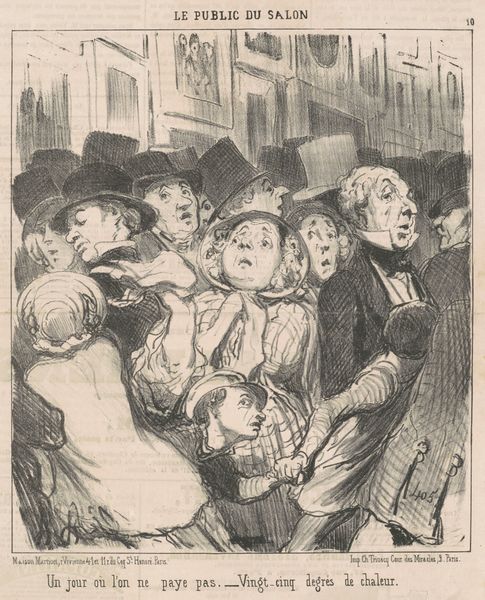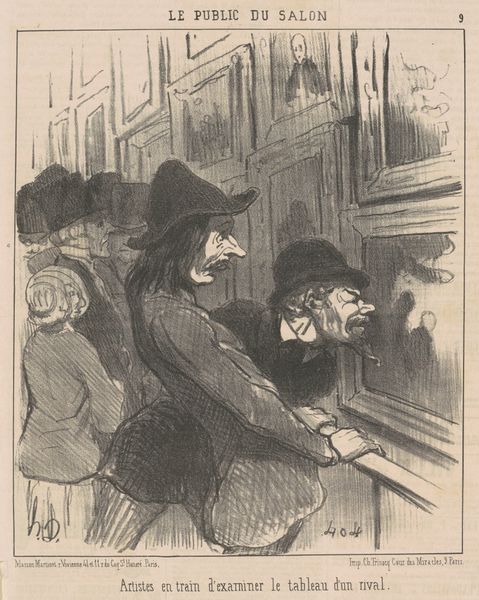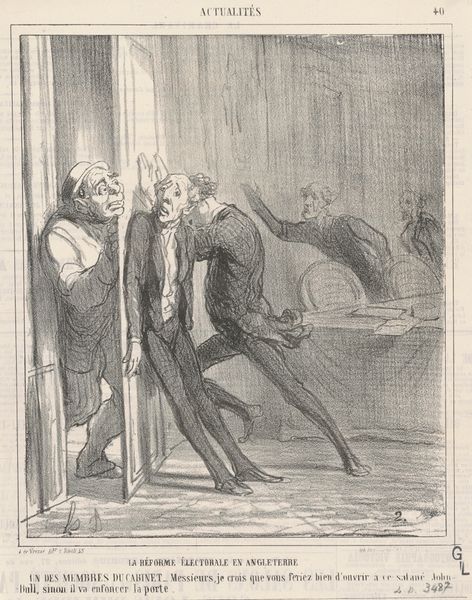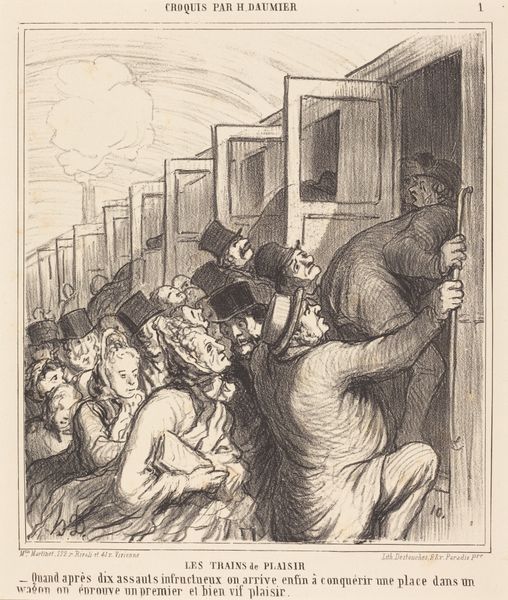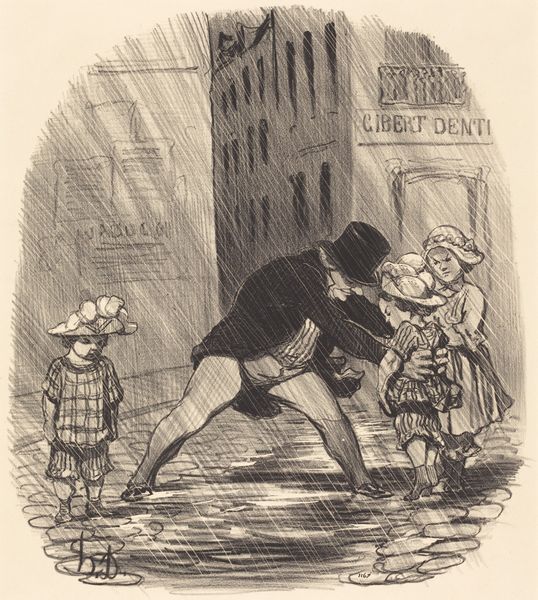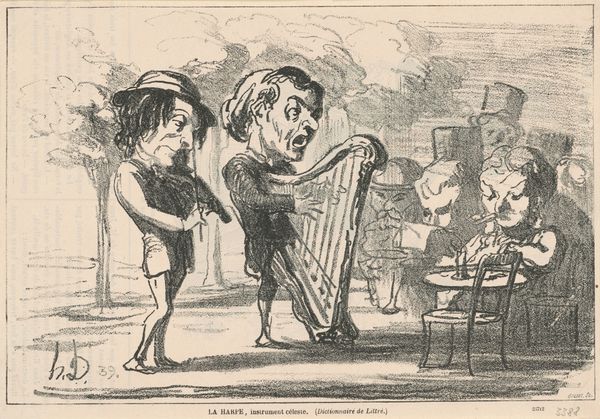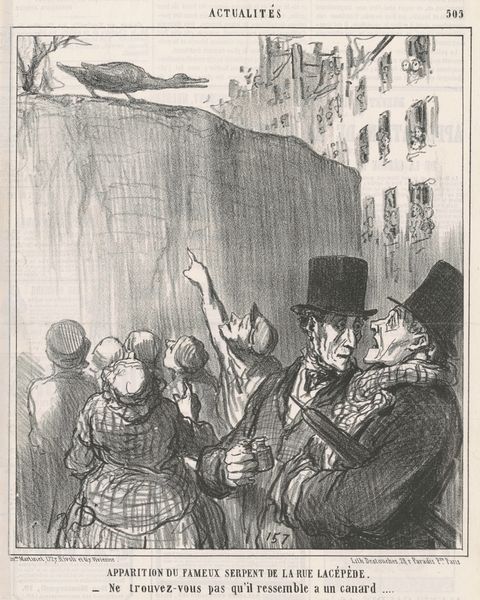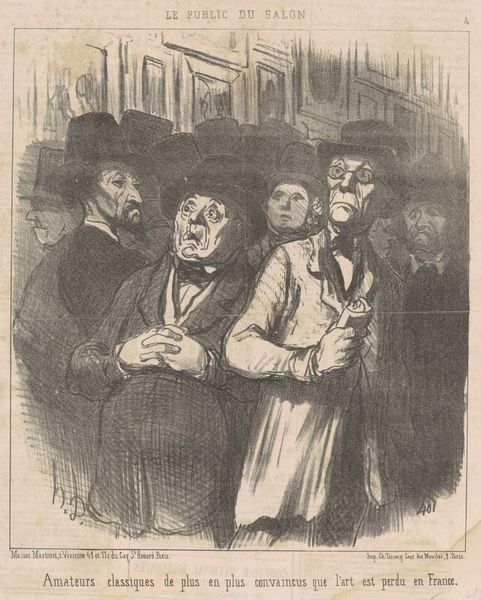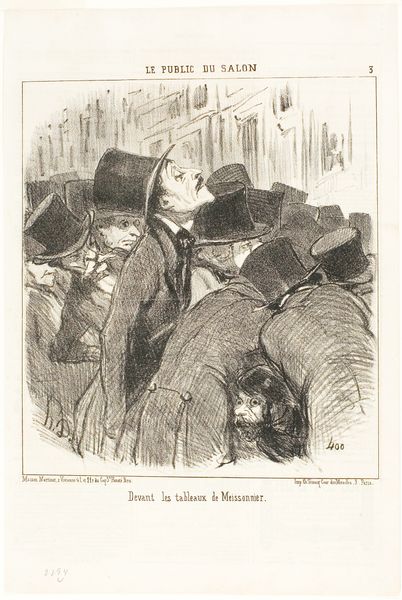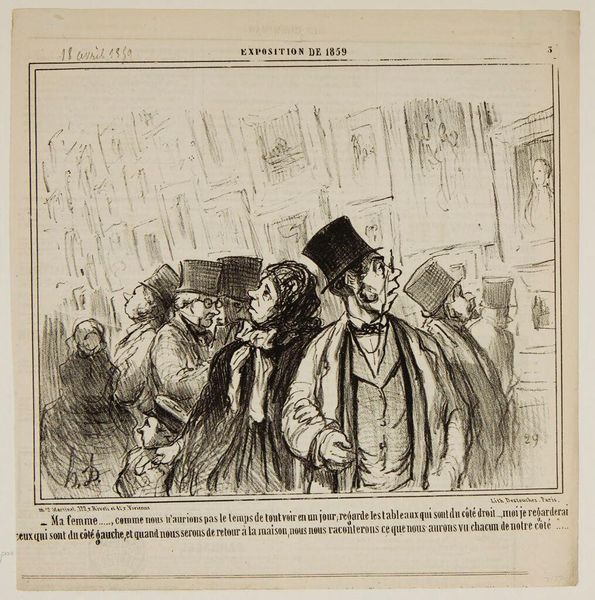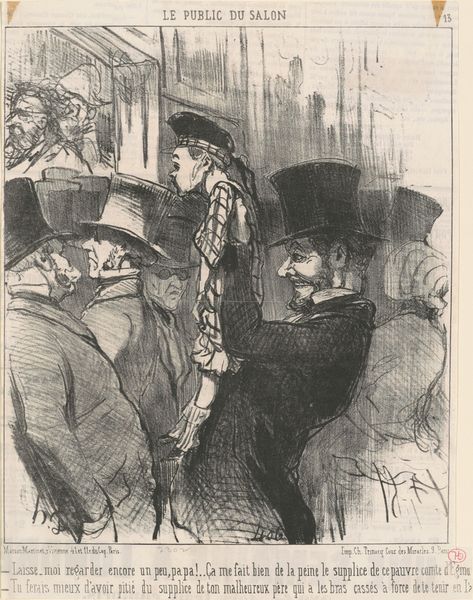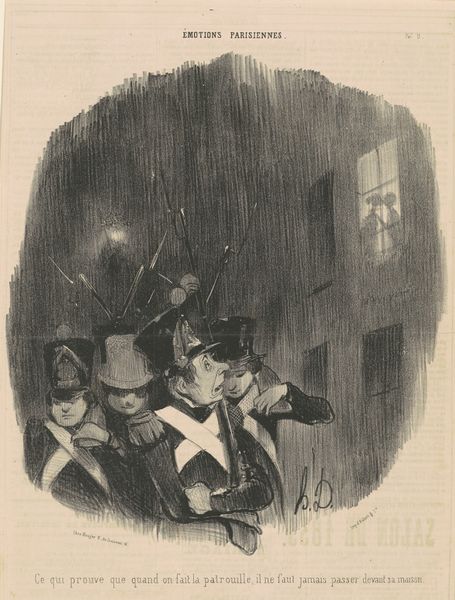
lithograph, print
#
lithograph
# print
#
caricature
#
figuration
#
romanticism
#
line
#
genre-painting
Copyright: National Gallery of Art: CC0 1.0
Curator: Oh, this is a thought-provoking lithograph by Honoré Daumier, titled "Le danger de faire voir a des enfants..." created circa the 19th century. Editor: It's certainly unsettling! The distorted faces crammed into the frame evoke a sense of claustrophobia. And that central, screaming child—the artist really emphasizes emotional distress through exaggerated lines. Curator: Indeed. Daumier used caricature as a powerful tool for social commentary. Here, he critiques the prevailing Romanticism of the Salon, specifically targeting a painting by Louis Gallait depicting the execution of the Count of Egmont. Editor: So the children's distress is a reaction to this rather sensational painting and the related narrative. I’m intrigued by how Daumier uses light and shadow. See how the faces in the background almost blend with the architecture, suggesting a kind of societal complicity? Curator: Precisely! The artwork raises critical questions about what we expose children to and how historical narratives of violence are presented and consumed. What are the psychological effects of such exposure on developing minds, and how does art function as a medium of political ideology? Editor: The composition really guides the viewer’s eye. The foreground figures dominate the space and push into ours, amplifying the unease. There is tension in how the details diminish from front to back, too, contributing to that compressed and anxious feeling. Curator: And there is also the way the image plays with class. The attire and expressions denote societal status while indicating their exposure to high art. How does viewing—particularly of tragic themes— become a marker of social distinction and emotional conditioning? Editor: I’d agree. Considering line work, too, there's a frenetic energy to his marks which really suits the chaos depicted in the scene. Curator: Exactly. This lithograph remains relevant. It prompts vital dialogues regarding power, representation, and the ethical obligations inherent in artistic expression and spectatorship. Editor: It’s powerful how the artist captured such unrest in just a simple print! I certainly appreciate it from a formal view more, having spent this time discussing the deeper meanings you drew from its content.
Comments
No comments
Be the first to comment and join the conversation on the ultimate creative platform.
